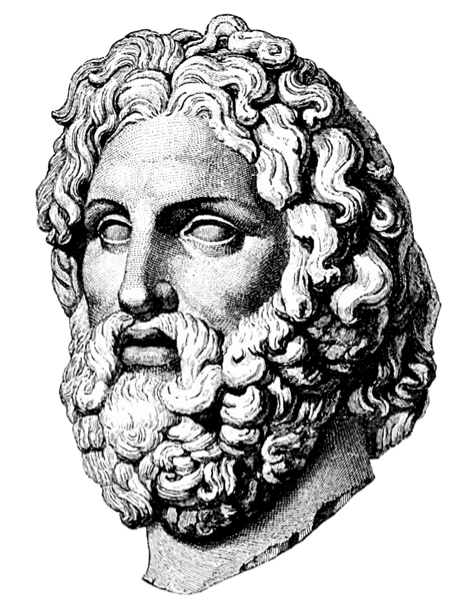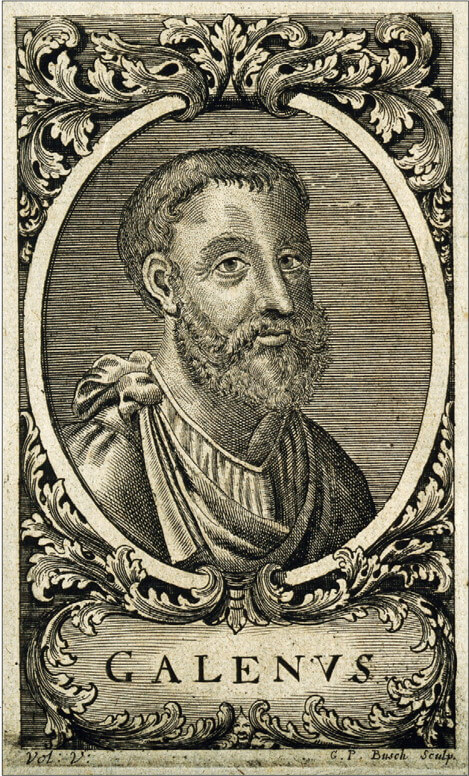The Greek physician, Claudius Galen, is considered to be one of the most important figures in the history of Medicine. Galen was the greatest physician of his era and was also a skilled surgeon and renowned philosopher. He was responsible for numerous advances in the fields of anatomy, physiology and therapeutics and led a truly remarkable life.
His father’s dream
Galen was fortunate to be born into an affluent home, in the city of Pergamon on the Aegean coast in AD 129. His father, Aelius Nicon, was a wealthy and well-respected architect and builder. Nicon was an educated man with interests in literature, astronomy, mathematics and logic. Galen described him as a “highly amiable, just, good and benevolent man”.
His father had planned for Galen to study philosophy and politics, which were the most respected of the academic pursuits in Greece at that time. This all changed, however, following a dream that he had in AD 144, when his son was aged 15. In this dream Asclepius, the God of medicine and healing, appeared to Nicon and informed him that he should allow his son to study medicine. After this dream it was arranged for Galen to begin his medical studies at the healing temple, or Asclepieum, in Pergamon following his 16th birthday.

Asclepius, the God of medicine and healing
Galen’s early medical career
Over the next four years Galen studied medicine at the Asclepieum with several illustrious physicians including Aeschrion of Pergamon, Stratonicus and Satyrus.
In AD 148 his father Nicon died, leaving Galen with a substantial inheritance and little in the way of ties to Pergamon. With this newfound freedom he decided to dedicate the next period of his life to travelling and gaining new medical knowledge. His travels took him to Smyrna, Crete, Corinth, Cyprus and finally to the great medical school in Alexandria. Over the next 9 years he would gain an unusually wide and varied medical education that would prove to be invaluable to him. In AD 157, he finally returned to Pergamon and was appointed physician and surgeon to the gladiators of the High Priest of Asia.
Unique insights into anatomy and trauma
It was during his time working with the gladiators that Galen would develop unique insights in the fields of anatomy and trauma. It is claimed that he was chosen for this job over other physicians when the High Priest eviscerated an ape and challenged the physicians to repair the damage. When they refused, Galen performed the surgery himself and was successful in his attempts, greatly impressing the High Priest and securing the position for himself.
He became very seasoned in the art of treating combat wounds and was also able to gain knowledge of practical human anatomy in a time when human dissection was strictly forbidden. He is said to have described the gladiator’s wounds as “windows into the body”. He would later further improve his knowledge of anatomy by performing dissections on apes and monkeys and became uniquely skilled in this field.
Only five gladiators died during his time as their appointed physician, a remarkable number when compared to the 60 deaths his that occurred during the time his predecessor cared for them. This was attributed to the meticulously painstaking wound care that he applied.
Marcus Aurelius and the Antonine Plague
In AD 161, aged 32, Galen travelled to Rome, and this is where he would spend the majority of the rest of his life. Whilst in Rome he gave numerous public lectures and anatomical demonstrations, which eventually brought him to the attention of the Emperor Marcus Aurelius. Galen would go on to become the personal physician of Marcus Aurelius and served him during his wars against the barbarian invaders that threatened the Daubian frontier.
In 166 AD the Antonine Plague struck Rome and Galen was present at the start of the outbreak. Galen helped to treat those afflicted with the illness and his descriptions of the outbreak have led many historians to believe that it was an outbreak of smallpox.

Galen, pictured in an engraving by Georg Paul Busch.
The latter years of Galen
Galen spent the remainder of his life in Rome and, following the death of Marcus Aurelius, he would serve as the physician to two of his successors, Commodus and Septimus Severus. He became a prolific writer and medical investigator and was responsible for over 80 separate works of great importance in the fields of medicine, anatomy, physiology and philosophy.
In the field of pharmacology he created the system of Galenic degrees, which is the first recognized attempt to precisely gauge the effects of medicines. As such he should be considered one of the earliest known clinical researchers. He is credited with the discovery that the arteries carried blood, was one of the first clinicians to recognize the importance of the pulse, and was the first person to discover that urine is formed by the kidneys.
Arabic sources state that he died aged 87 in 216 AD in Sicily. Galen left an indelible mark of the medical world during his lifetime and changed the practice of medicine for hundreds of years after his death. It was not until the Renaissance that many of his theories would be disproven or improved upon and without him the medical world as we know it today might be a very different one.
Medical Exam Prep would like to thank Dr. Marc Barton for this guest blog post.
About Dr. Marc Barton
Dr. Marc Barton qualified from Imperial College School of Medicine in 2001. Since that time he has worked in a variety of different medical specialities. He worked as a GP partner from 2006 until 2008 and more recently as a higher specialist trainee in Emergency Medicine.
You can read more posts on the History of Medicine from him at his blog: Past Medical History





